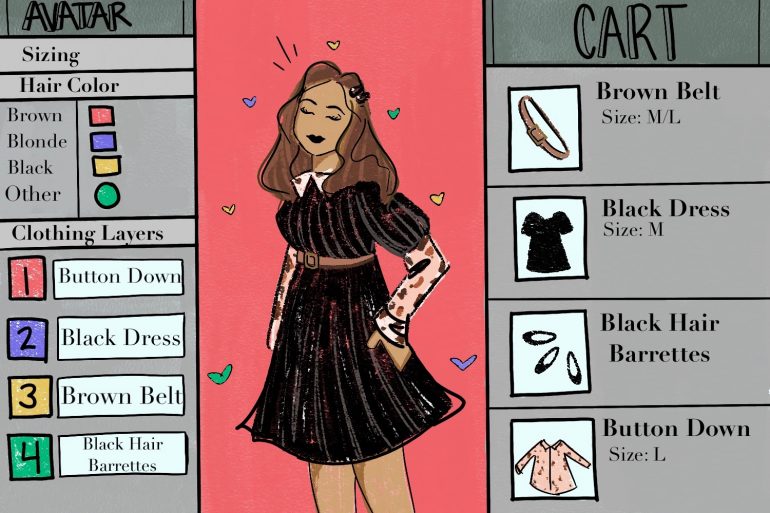In a world surviving a global pandemic, fitting rooms are closed, and retailers have no choice but to develop new strategies to engage with their consumers. One of these approaches includes the industry’s latest feature in revolutionizing the way we shop: virtual fit technology. This method is an efficient way to try on new pieces and increase consumer confidence to shop online more often.
Virtual fit technology is fast, easy, and hygienic — an essential to the future of fashion. The Wanna Kicks app, released in 2019, uses augmented reality (AR) to enable consumers to virtually preview sneakers from brands like Puma and Adidas. This not only saves them a trip to the store but provides them with the safety of shopping online without the worry if they’ll actually like the product once it arrives on their front steps.
Online shopping platform Farfetch is also investing in virtual fitting rooms. In August, they launched a virtual try-on function in their app where users can select Off-White sneakers to see how the style would appear on their feet. With AR’s help, Farfetch’s Director of Innovation Carol Hilsum believes that virtually trying on sneakers is the beginning of something groundbreaking. With the growing tendency of consumers choosing to shop online instead of going to a physical store, Virtual fit technology will give consumers yet another reason to ditch in-person shopping.
Keeping this in mind, what could improve in virtual try-on technology outside the realm of footwear? Expanding AR technology to accessories is likely to be the next step. The same quality of AR used for sneaker-mapping could also trace ears, enabling the consumer to try on earrings virtually.
Expanding this technology to clothing could pose a more significant challenge. With a wide variety of body types, a single dress can’t look identical throughout the consumer market’s breadth. Augmented reality devices would need to accurately measure the entire body to project how clothing would look realistically. Starting with smaller features like ears, feet, and wrists is a step in a positive direction.
As technology has been taking over the world, one could easily predict its eventual impact on the fashion industry. Virtual fit technology is expected to change the consumer market forever and may even substitute in-person shopping experiences into the foreseeable future.
Words by Maria Carolina Dutra
Illustration by Alexis Divis

